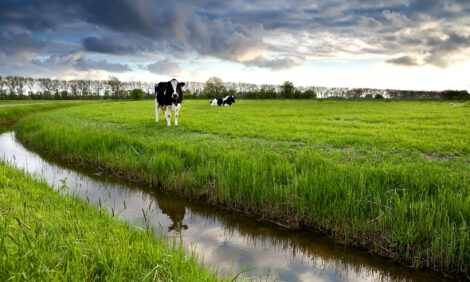



Higher make allowances seen
US - Higher make allowances are in store for processors. A U.S. District Court in Ohio denied a motion seeking to block implementation of USDA's proposed changes to federal order Class III and Class IV milk price make allowances. The ruling, issued Feb. 22, impacts both dairy producers and processorsWith the ruling, USDA will announce future federal order prices based on the new formulas. The March Class I base price was announced Feb. 23 at $14.25 per hundredweight, up 96 cents from February, $1.76 above March 2006, and is above the congressionally mandated trigger, so no MILC payment will be made.
The NASS butter price averaged $1.2148, up 2.4 cents from February. Cheese averaged $1.3529, up 2.5 cents. Nonfat dry milk averaged $1.0960, up 5 cents, and dry whey averaged 59.86 cents, up an unbelievable 14.5 cents.
January milk production totaled a whopping 14.2 billion pounds, up just 1.4 percent from January 2006, according to preliminary data in the Agriculture Department's latest Milk Production Report. Cow numbers totaled 8.28 million head, up 3,000 from December, and 81,000 more than a year ago. Output per cow averaged 1,719 pounds, up 8 pounds from a year ago.
California output was up 3.9 percent, thanks to 15,000 more cows and a 55-pound gain per cow. Wisconsin was up 2.6 percent, on a 35-pound gain per cow and 5,000 more cows. New York was down 2 percent, due to a drop of 19,000 cows, but output per cow was up 15 pounds. Pennsylvania was down 2.1 percent, on an 8,000-cow drop, and 10 pounds less per cow. Idaho was up 5.9 percent, due to a 28,000-cow increase, but output per cow was unchanged. Minnesota was up 3.5 percent, on 10,000 more cows and a 20-pound gain per cow.
The biggest increase was seen in Idaho, followed by Michigan, up 5.6 percent thanks to 11,000 more cows and a 35-pound gain per cow. Missouri showed us the biggest decline, down 8.5 percent due to a drop in output per cow of 140 pounds. Cow numbers were up 1,000 head. Next was Kansas, off 6.5 percent due to a 100-pound drop per cow and 1,000 fewer cows.
Source: Capital Press


